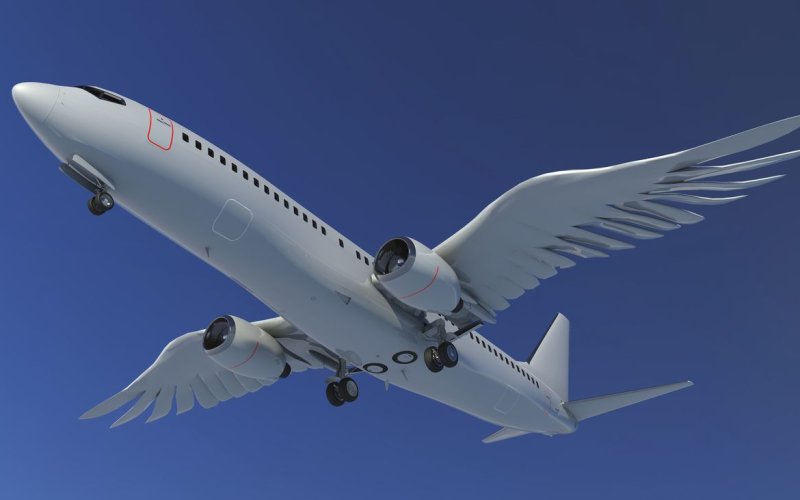Planes were inspired by birds and all birds flap their wings when they fly. So why don’t planes flap their wings and they are fixed?
I have rather brief information about the history of flying but I think that the inspiration was based on the free flying of birds when they do not flap their wings (e.g. still used today by gliders). The principle of gliding (and therefore the flight of an aircraft) is different from flapping wings. When flapping its wings, a bird rises due to the fact that it bounces off the air. This requires a large wing area and at the same time the small weight of the bird. The force that we exert on the air is from Newton’s 3rd law that it is the same as the force that air exerts on us. But the air is fluid and very well compressible. So the wings compress the air and the force that the air will exert on the wings is smaller than if we were flapping like that in water. It is quite good to see on diving fins. Thanks to them, we move in the water but the fins do not make us move in the air (e.g. on a skate). The solution would be to use much bigger fins, but that in turn would increase our weight and require more force to move. Therefore, aircraft use a hydrodynamic paradox (Bernoulli’s equation) — the faster the air (generally a fluid) moves, the lower the pressure at a given location. The wing of an aircraft is shaped so that its upper part flows around the air significantly faster than the lower part. As a result, less pressure is exerted on the upper part of the wing than on the lower part, and this pressure difference raises the aircraft. I have described the whole matter only physically and even technically it is much easier to use a static forward drive than a complex system that moves the wings. From the speed of the propeller, we are able to relatively easily adjust the speed of the aircraft, and therefore the pressure difference acting on the wing of the aircraft.
Want to ask something?
Send us an e-mail with the subject “Physics mysteries” to the address:
We can't wait to tackle your interesting questions!





